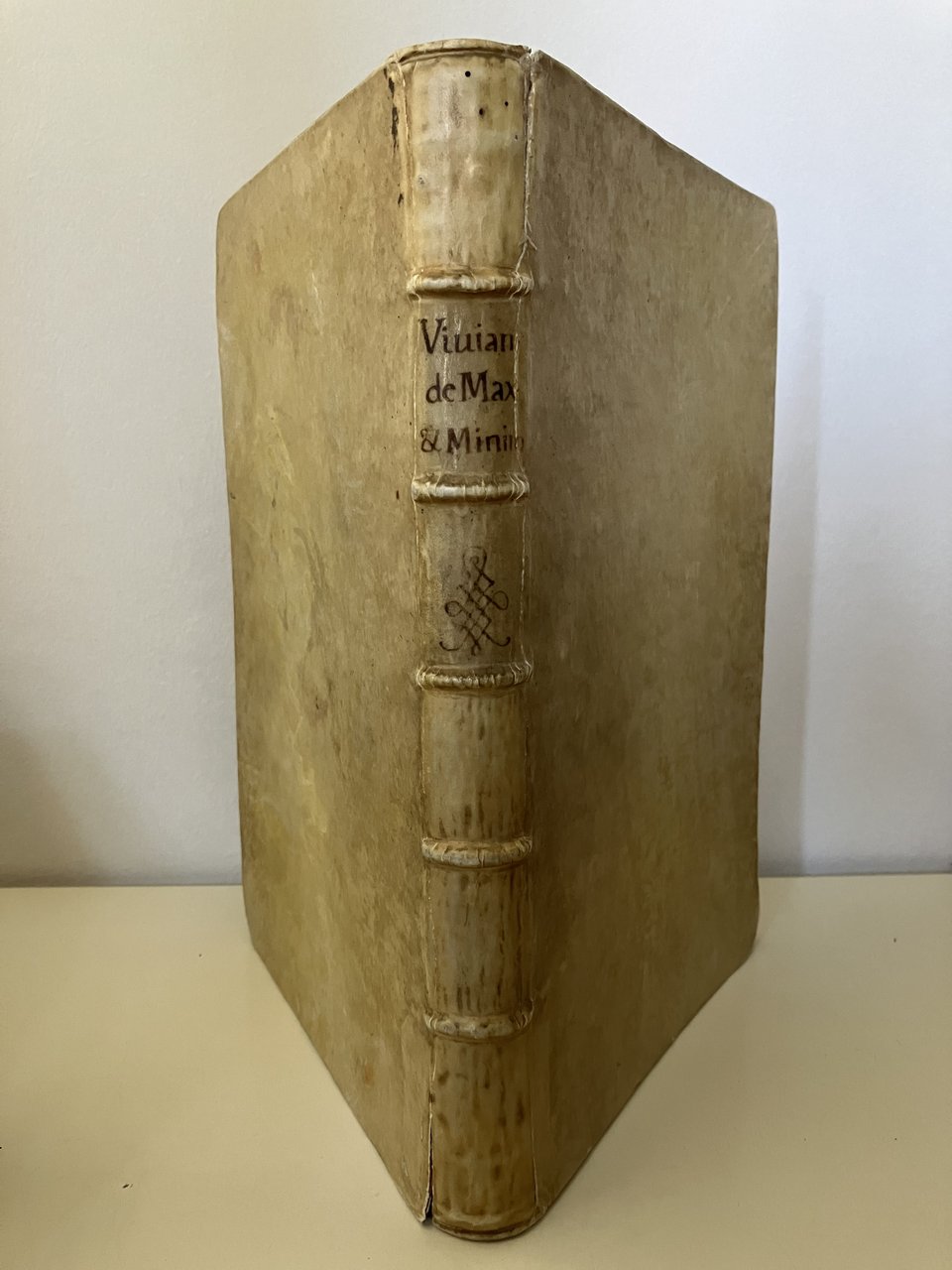
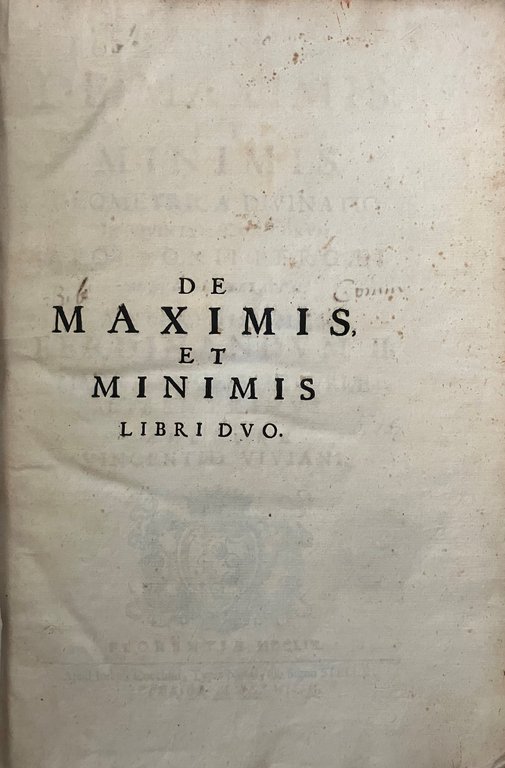
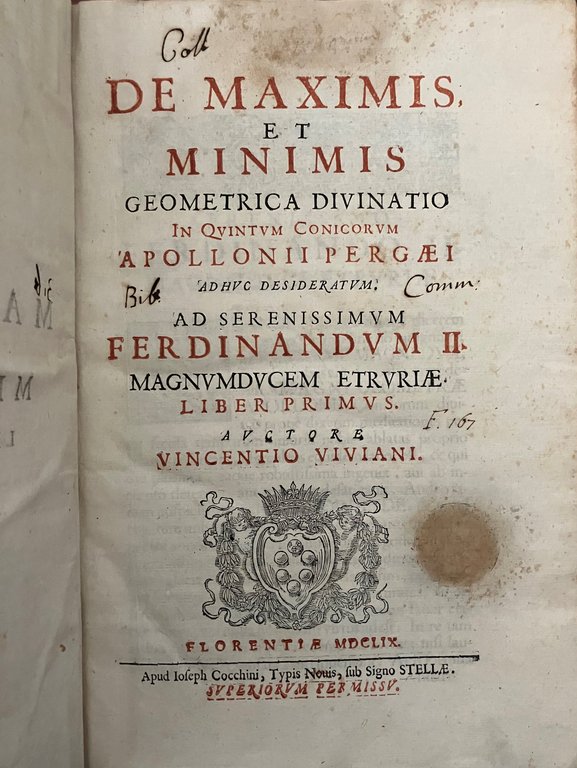

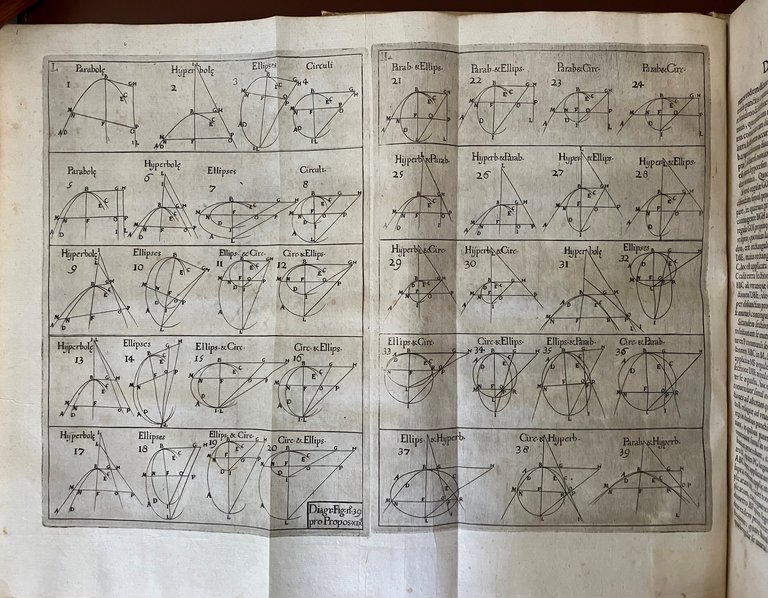
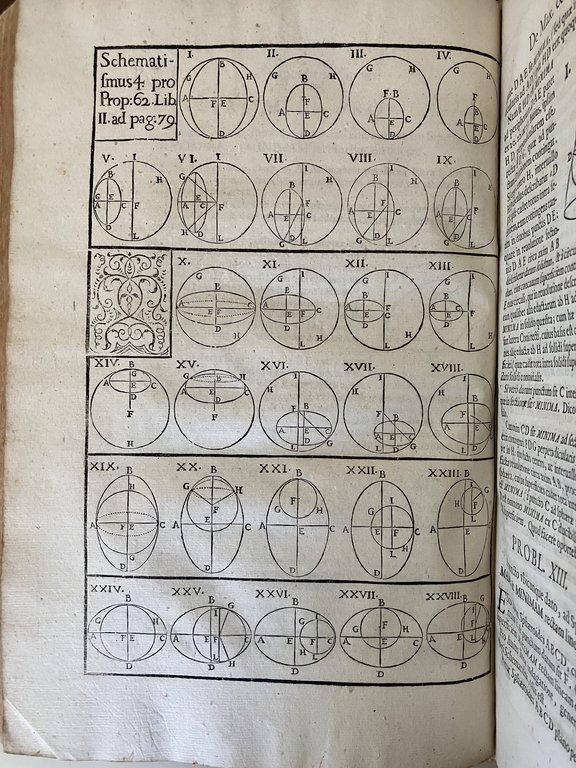
Rare and modern books
Vincenzo Viviani
De Maximis et Minimis Geometrica Divinatio in Quintum Conicorum Apollonii Pergaei Libri Duo
Ioseph Cocchini, 1659
unavailable
Hermes Rare Books Studio Bibliografico (Geneve, Switzerland)
Ask for more infoThe correct shipping costs are calculated once the shipping address is entered during order creation. One or more delivery methods are available at the Seller's own discretion: Standard, Express, Economy, In-store pick-up.
Bookshop shipping conditions:
For items priced over €300, it is possible to request an instalment plan from Maremagnum. Payment can be made with Carta del Docente, Carta della cultura giovani e del merito, Public Administration.
Delivery time is estimated according to the shipping time of the bookshop and the courier. In case of customs detention, delivery delays may occur. Any customs duties are charged to the recipient.
For more infoPayment methods
- PayPal
- Credit card
- Bank transfer
-
-
Find out how to use
your Carta del Docente -
Find out how to use
your Carta della cultura giovani e del merito
Details
Description
First edition of Viviani's attempt to reconstruct the lost fifth book of Apollonius of Perga's Conics. Classical work of analytical geometry. First work by the last Galileo student Viviani (he remained G.’s disciple until his death in 1642), an astonishingly accurate reconstruction of the fifth book of the cone section theory of Apollonius." It is one of the very few restorations whose values could subsequently be convinced by the rediscovery of the true wording (Cantor II, 660). Even before the publication of the work, an Arabic manuscript of the text was found, which was published in 1661. For Viviani, this publication became a true triumph, as it showed how close he had come to the train of thought of Apollonius. In the appendix of the second part, Viviani published his solution to the so-called "Steiner problem", which had to be called "Fermatsch’s problem." Variants of this problem have recently attracted great attention in computer science ("Reiss 4.27.2010).
The work "De Maximis et Minimis" by Vincenzo Viviani is of considerable importance in the history of mathematics because it represents one of the first fundamental works on analysis and infinitesimal calculus.
Vincenzo Viviani (1622-1703) was an Italian mathematician, a student of Galileo Galilei and a friend of Evangelista Torricelli. In addition to the development given to geometry, he first measured the arc of a pendulum, one of the first experimental tests of Galileo’s theory, thus contributing to the understanding of the movement of pendulums.
In his work "De Maximis et Minimis", published for the first time in 1659, Viviani deepens the concepts of maxima and minimums of both algebraic and geometric functions.
«De Maximis et Minimis » is one of the first mathematical treatises to systematically address infinitesimal calculus, a field of mathematics that would become fundamental over the following centuries. Viviani introduces methods to calculate maxima and minima of functions through the analysis of their derivatives, anticipating key concepts of differential and integral calculus.
In his treatise, Viviani does not limit himself to exposing abstract theories, but also proposes concrete solutions to optimization problems, which find application in different disciplines such as engineering, architecture and physics.
"De Maximis et Minimis" greatly influenced the development of 17th century European mathematics. Viviani’s ideas were an important contribution to the development of calculus, a mathematical field that would reach its peak with the work of mathematicians such as Isaac Newton and Gottfried Leibniz in the following century. Cinti 135. - Riccardi I/2, 625 ("raro e pregiato"). - DSB XIV, 49 f.
Prima edizione del tentativo di Viviani di ricostruire il quinto libro perduto delle Coniche di Apollonio di Perga. Opera di geometria analitica che anticipa concetti chiave del calcolo differenziale e integrale.
Vincenzo Viviani, allievo di Galileo, contribuì anche alla comprensione del movimento dei pendoli. "De Maximis et Minimis" affronta il calcolo infinitesimale e offre soluzioni concrete per problemi di ottimizzazione in varie discipline. Pubblicato nel 1659, il lavoro è un pilastro nella storia della matematica.

